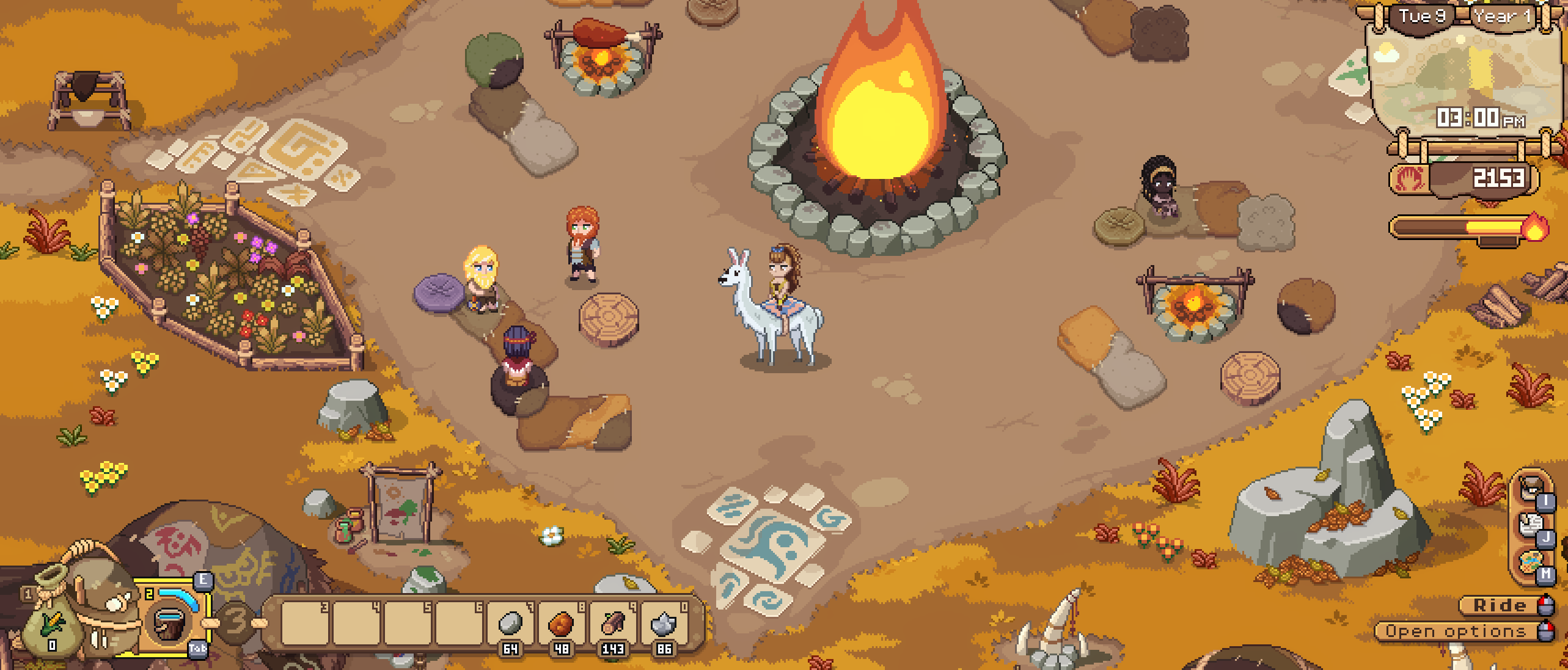Our Verdict
Even amidst the farming sim renaissance, Roots of Pacha cultivates a charming, community-driven vision of the Stone Age that’s endlessly satisfying and always enchanting.
PC Gamer's got your back
I’ve spent decades inheriting dozens of middle-of-nowhere farms with overgrown fields and abandoned sheds in desperate need of rehabilitation. On acres of forgotten land, I methodically till, plant, and harvest until I’ve grown popular with the locals. My reputation as an expert farmer earns me a modest living, and I’m often up plowing before sunrise, sometimes working until a neighbor finds me facedown in a pile of turnips.
What is it? A cozy, stone age farming sim that delights in genre staples while tuning the formula just enough to create something engaging and fresh.
Release date: April 25, 2023
Expect to pay: $25, £22
Developer: Soda Den
Publisher: Crytivo
Reviewed on: Windows 11 Pro, Intel Core i7 - 10700k CPU, 64GB RAM, GeForce RTX 3080, and Steam Deck
Multiplayer? Four-player online co-op
Link: Official Site
Just kidding! I can hardly keep a cactus alive—though if I’m allowed to count time spent in Harvest Moon, my resume still stands. Some of my earliest "just five more minutes" pleas were so I could stay glued to Harvest Moon: Back to Nature, eager to see another heart event, attend fishing festivals, or name more pets. As a bright-eyed little girl, my farm was a brand-new toy with dozens of potential friends. As an adult, I’ve watered a few too many tomatoes. My fascination with Harvest Moon’s residents and their day-to-day schedules dulled, but I kept hoping another farm life game would make me fall in love with a quaint town full of villagers again. I’ve found that community magic once again in Roots of Pacha.
Roots of Pacha is a prehistoric farming simulator that brilliantly iterates on a genre famous for finding joy in the monotonous and mundane. Pacha quickly establishes itself as a farming sim more interested in building community and sense of fellowship than other games like it that I've played. Instead of leaving first-time farmers to fend for themselves, the Pachan Clan settles down close together. I spent my first spring as a Pachan living in my grandparent's home, and with their help, I steadily accrued "contribution"—Pacha’s currency with a communal spin.
As an individual, I earn contribution points by dropping items into the community bin. Those points belong to me; I can spend them on tools, seeds, furniture, and the like, but I’m not the only one who benefits from the success. My contribution feeds into a secondary prosperity pool and, with time, will unlock better village infrastructure shared amongst the clan. No one can spend the clan’s prosperity, but everyone’s growth adds to the sum.
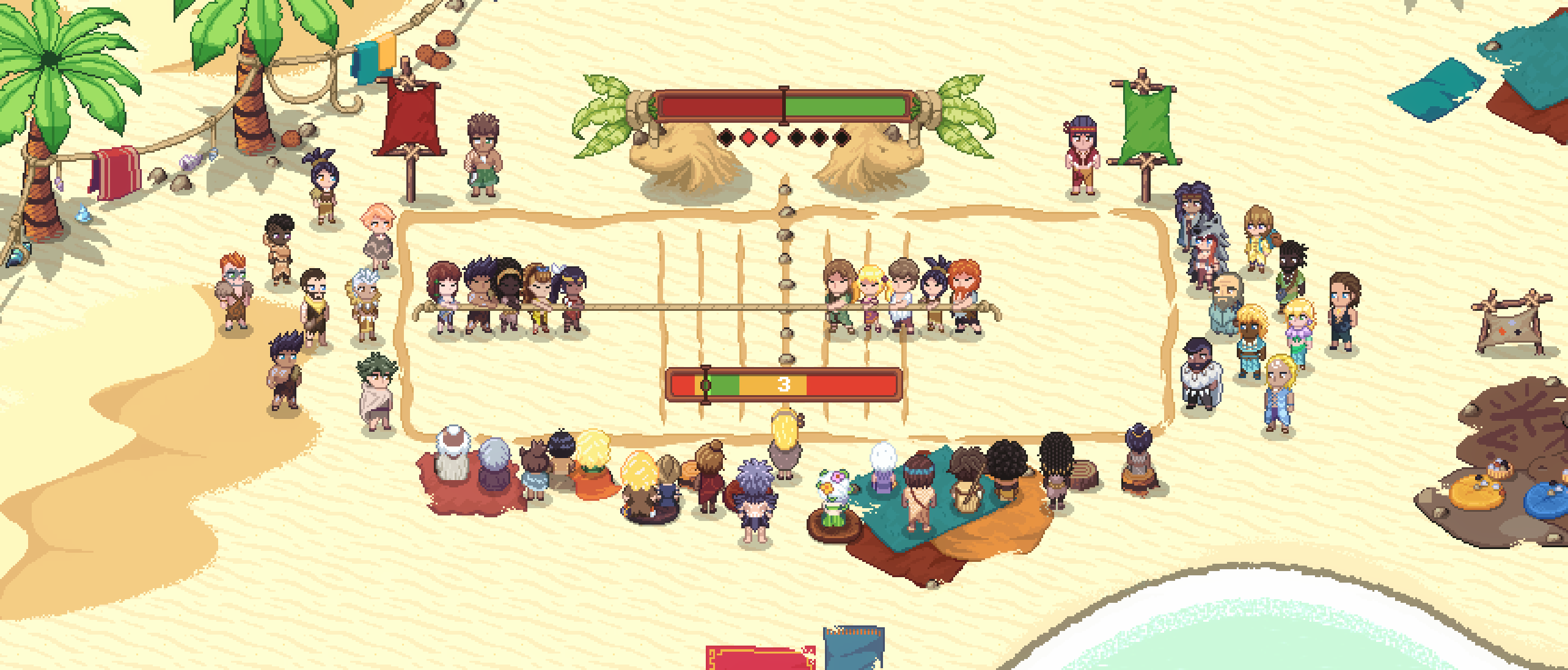
There’s time for the usual gift-giving, romance, festivals, gathering, cooking, and building, too—but even the most basic systems in Pacha benefit from its novel shroud of communal living. Vauk, the clan shaman, advised me to work with my clan to bring their "ideas" to fruition, and I learned the hard way not to min-max my farming specializations. I didn’t say much to clan caretaker Daari or the artist Reese through the first two seasons, instead hurrying to tame new animals and build sheds, which meant neither character would suggest new ideas for processing produce or cooking. It wasn’t until late fall—when I hit a wall and needed to cook for other Pachans—that I realized my mistake. Revisiting conversations with Daari and Reese equipped my kitchen with more sophisticated tools, and now I can make recipes with beefier stat bonuses that aid in my other chores.
Reinventing the wheel
In the most American South accent ever, I hear my pop saying, "If it ain’t broken, don’t fix it," and Roots of Pacha gets it. In an era of cozy games eager to add their spin on the Stardew-like, Pacha doesn’t lean too heavily into replicating tedious rise-and-grind time sinks or trying to be radically different. Ideas are typical quests—they're just cleverly woven together. Farm animals are plentiful, but I’m finding and taming new critters instead of paying a rancher. There’s a plethora of crops to grow; each with its own added nuances. If you squint, Pacha may look a little samey, but tweak the formula too much and this kind of game loses its potency.
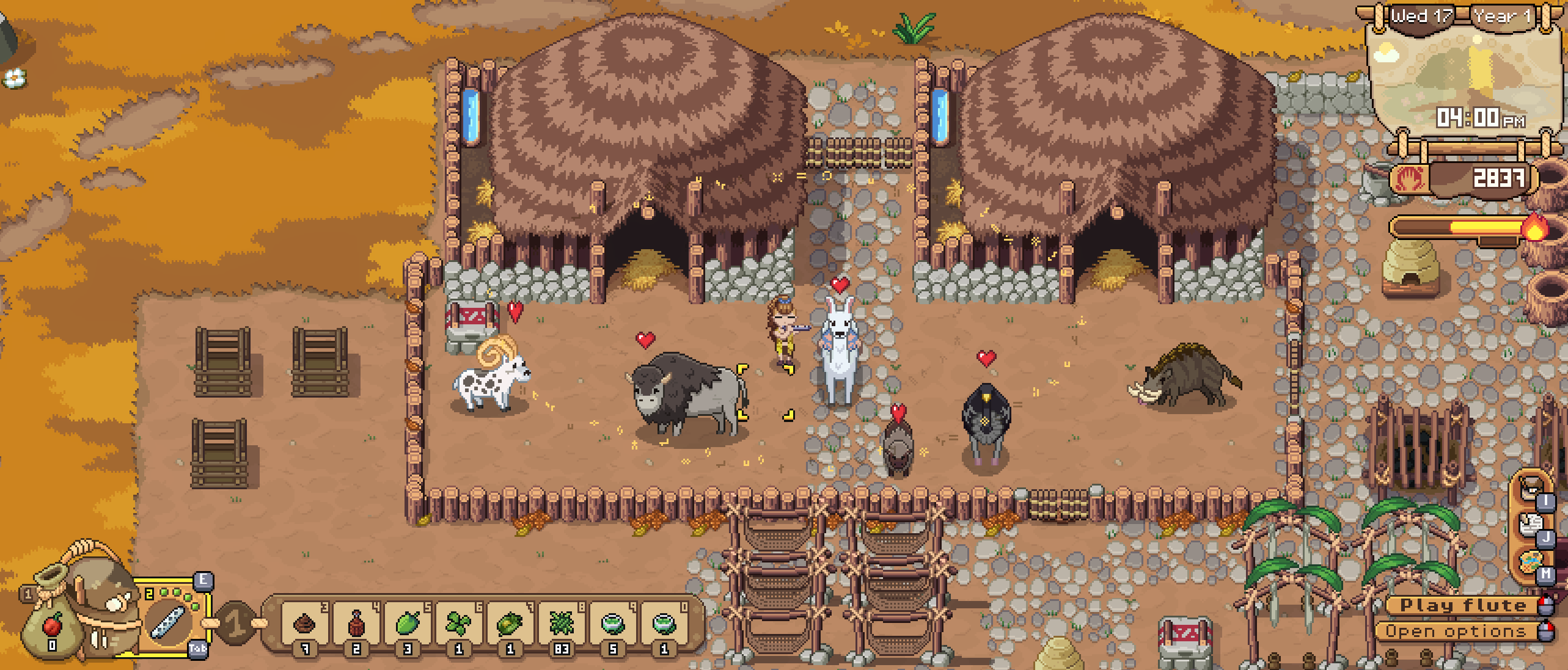
The villager idea system’s thoughtful net of intertwined chores for clan progression propelled me along. When the time came and I realized I’d have to roam into the caves—my least favorite task in any game like Pacha—I sought out village tool-crafting wiz Acre. I’d grown so excited by the prospect of fulfilling more ideas I went spelunking without a second thought, never stopping to bemoan my new mining tasks.
Instead of feeling like I was progressing towards a bunch of separate goals, I was delighted by how organically my accomplishments fed into each other. Acre often tasked me with finding new ore, and her ideas meant I could amass more materials for projects from her partner, Croll. The more I did for Acre, the more Croll could improve my own facilities.
Speaking of animals, Pacha has enabled my wildest Harvest Moon dreams through a sizeable critter roster. I didn't expect to also be living out my fantasy of becoming a zookeeper, but here we are (though in a real zoo, I think I'd get in trouble for riding some of the animals).
Despite trying to stay on task, I kept finding myself getting distracted in the best ways. While searching for more animals I'd get sidetracked by an unfamiliar plant. One such discovery landed me a handful of buckwheat seeds instead of the bright green ostrich I’d set out for, but those seeds eventually became alcohol and inspired an idea in another Pachan. Two days later, she discovered how to make vinegar and pickles.
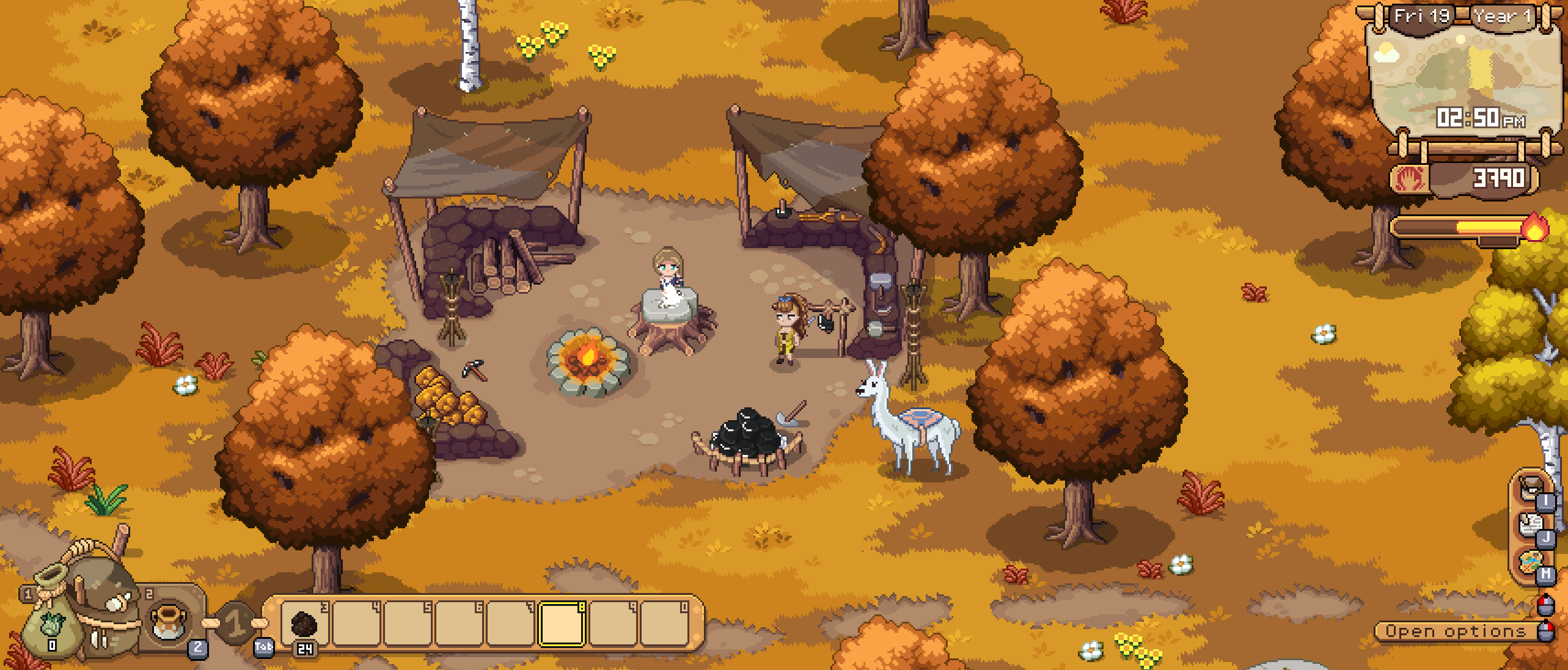
On occasion I’ll still get a little too focused on a single product, but Roots of Pacha isn’t punitive. When I got really into corn (it has the juice), my knowledge rank for corn improved. Wild corn seeds suddenly yielded evolved, domestic cobs. As a newly esteemed corn scholar the Pachans gave me new ways to process the grain, helping me produce products like flour and oil. My pineapple-growing days had to wait until the following year, but I grow the best damn corn in all of Pacha—the delay was worth it.
It takes a village
Initially, the individual Pachans didn’t make much of an impression. I was focused more on fulfilling their ideas and improving the big picture, and eventually I saw these systems work best because of the game’s heavy focus on the clan as an ensemble. My neighbors’ care for each other endeared me constantly, and before I knew it, I started chasing the more personal and revealing scenes between individual Pachans and even clan outsiders.
As the seasons cycled, my community welcomed new characters. Growth and tradition fueled my relationships, particularly with characters like Mana, who went on to become my love interest and marriage prospect. As I showered her with gifts, I learned about Mana’s struggle with her father’s strict adherence to tradition. As his youngest child and only daughter, Mana’s father grew frustrated with her attempts to appoint someone outside the family as their representative in a clan competition. Usually, that honor would go to the eldest son, but Mana makes another suggestion. She wants to send Garrek, a young man unrelated to her family with plenty of wisdom but no self-esteem.
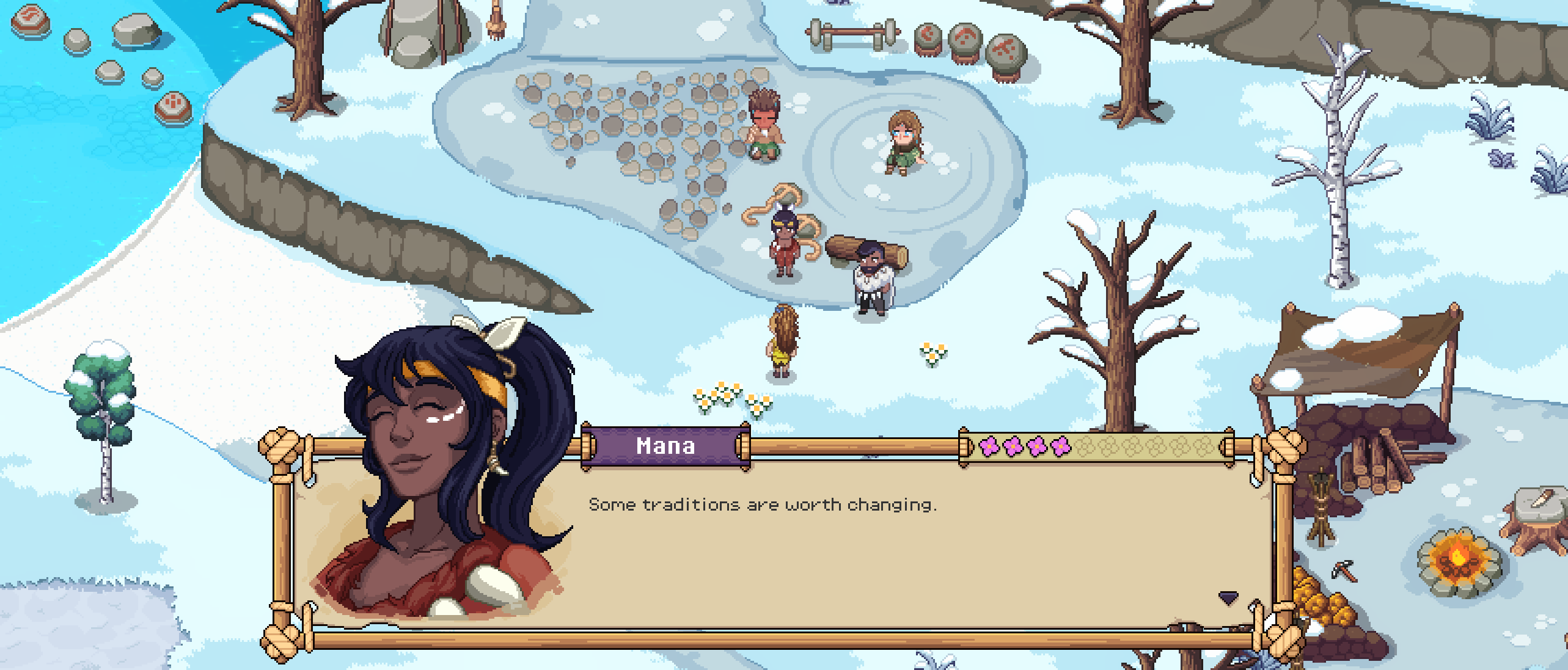
Instead of fractured, private storylines, Mana’s arc bled into Garrek’s struggle with self-confidence. He’s probably the group's most anxious personality, but he’s sharp as a tack, and the rest of the clan knows it. What started as passing romantic interest led to me ping-ponging between the two, admiring Mana for empathy and righteous frustration while hoping Garrek would eventually believe praise from his comrades.
These threads cultivate a farming sim where every chore feels purposeful. Some ideas required more tedious tasks like fishing, but as I went on those excursions I met another local, Inza, who improved my equipment to better aid our neighbors. Some layers of complexity were overwhelming in the busiest moments (like worrying about individual plant knowledge), and I did run into the occasional frustrating bug, but my farm was never any worse for wear. Roots of Pacha has earned itself a spot among farm-centric life sim titans for its clever community-driven systems—never neglecting genre staples (like corn), and innovating in places I didn't even realize there was so much room to grow.
Even amidst the farming sim renaissance, Roots of Pacha cultivates a charming, community-driven vision of the Stone Age that’s endlessly satisfying and always enchanting.

Andrea has been covering games for nearly a decade, picking up bylines at IGN, USA Today, Fanbyte, and Destructoid before joining the PC Gamer team in 2025. She's got a soft spot for older RPGs and is willing to try just about anything with a lovey-dovey "I can fix them" romance element. Her usual weekly to-do always includes a bit of MMO time, endlessly achievement hunting and raiding in Final Fantasy 14. Outside of those staples, she's often got a few survival-crafting games on rotation and loves a good scare in co-op horror games.
